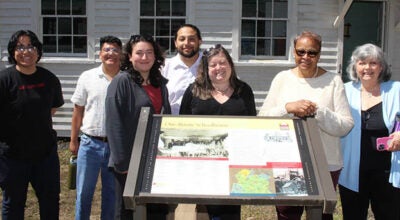Farm women and youth more likely to be injured in ATV, UTV accidents
Published 2:01 pm Thursday, June 23, 2022
|
Getting your Trinity Audio player ready...
|
Utility vehicles essential for many farm chores should always be sized correctly and used with caution, especially among women agriculturalists, whose on-farm roles are continually expanding.
Farmers may believe all-terrain and utility vehicles are the greatest tools since the skid steer, said Dan Neenan, director of the National Education Center for Agricultural Safety. But studies indicate that injured ATV/UTV passengers are commonly female or youth.
Agricultural safety experts urge proper sizing when shopping for an ATV or UTV, and when choosing personal protective equipment.
“Stand on the footrests, and grasp the handles,” Neenan advised in a webinar geared toward female agriculturalists and hosted by AgriSafe Network. “While holding this position, check that there is at least 3 inches of clearance between the seat and the back of your pants.”
The same attention to sizing should be applied to PPE.
“A woman’s body is built differently,” he continued. “And, unfortunately, most PPE on the market is made to fit a man. But there are PPE outlets that are sized to women.”
The rider’s physical size, strength, experience level, coordination, visual perception, maturity and reasoning also should be taken into consideration. This is as important as the vehicle manufacturer’s minimum age recommendation, Neenan added.
“ATVs and UTVs are enormously useful for farm chores,” noted Dana Fisher, chairman of Virginia Farm Bureau Federation’s Farm Safety Advisory Committee. “But they also pose serious hazards to operators and passengers. These vehicles, based on the size, can be a lot more powerful than people anticipate. Their weight and speed make it easy for a smaller individual to lose control.”
The vehicles handle differently on various road surfaces, Fisher noted. Steering and braking capacity can change with fluctuating loads since some farm tasks must be completed in unfavorable weather conditions.
Neenan added that the right helmet is crucial. “When you have an incident with a motor vehicle, there is more than one collision,” he explained. “There is initial collision with the object; when the victim is airborne, there’s another collision; and then a third collision of the brain hitting the inside of the skull.”
Farms and work sites can be spread out for several acres, leaving workers alone for long periods of time, he added. Employers should know the operator’s destination, estimated time of return, contact information and alternate routes, and have check-in procedures in place.
To view the webinar and see other farm safety resources, visit Learning.agrisafe.org to create a free profile.




